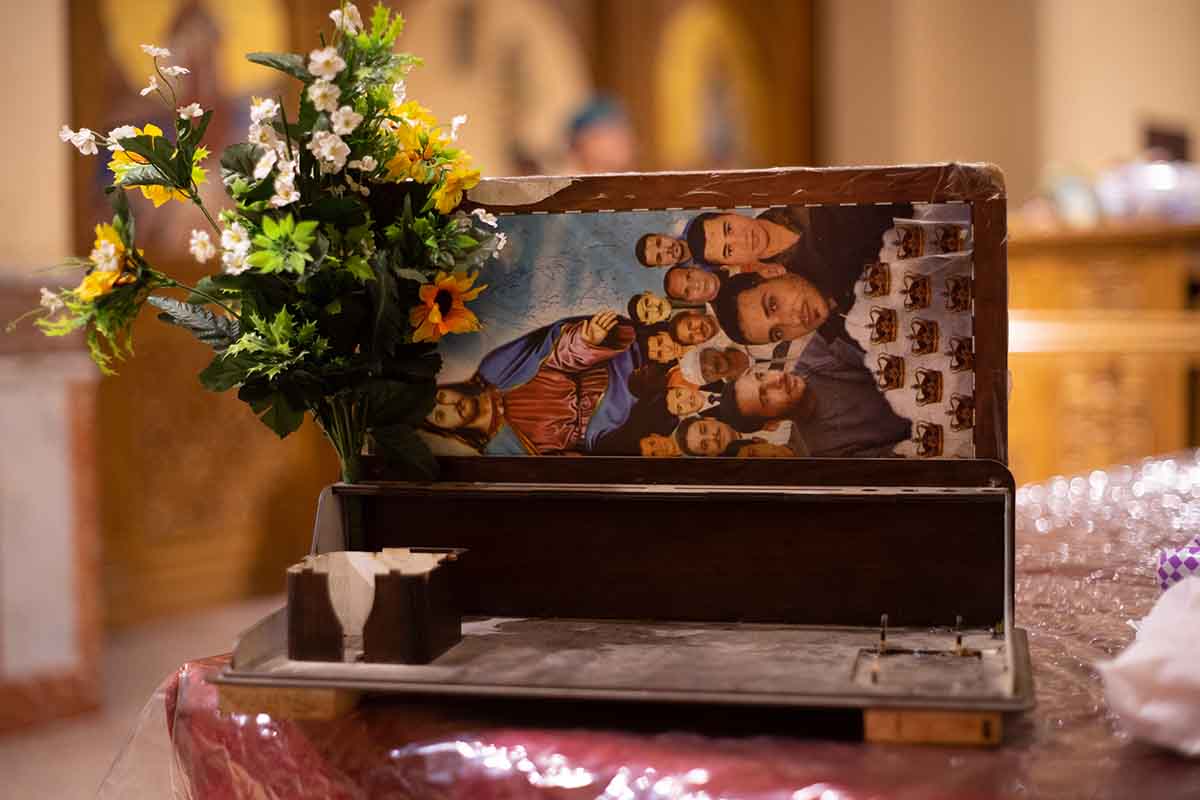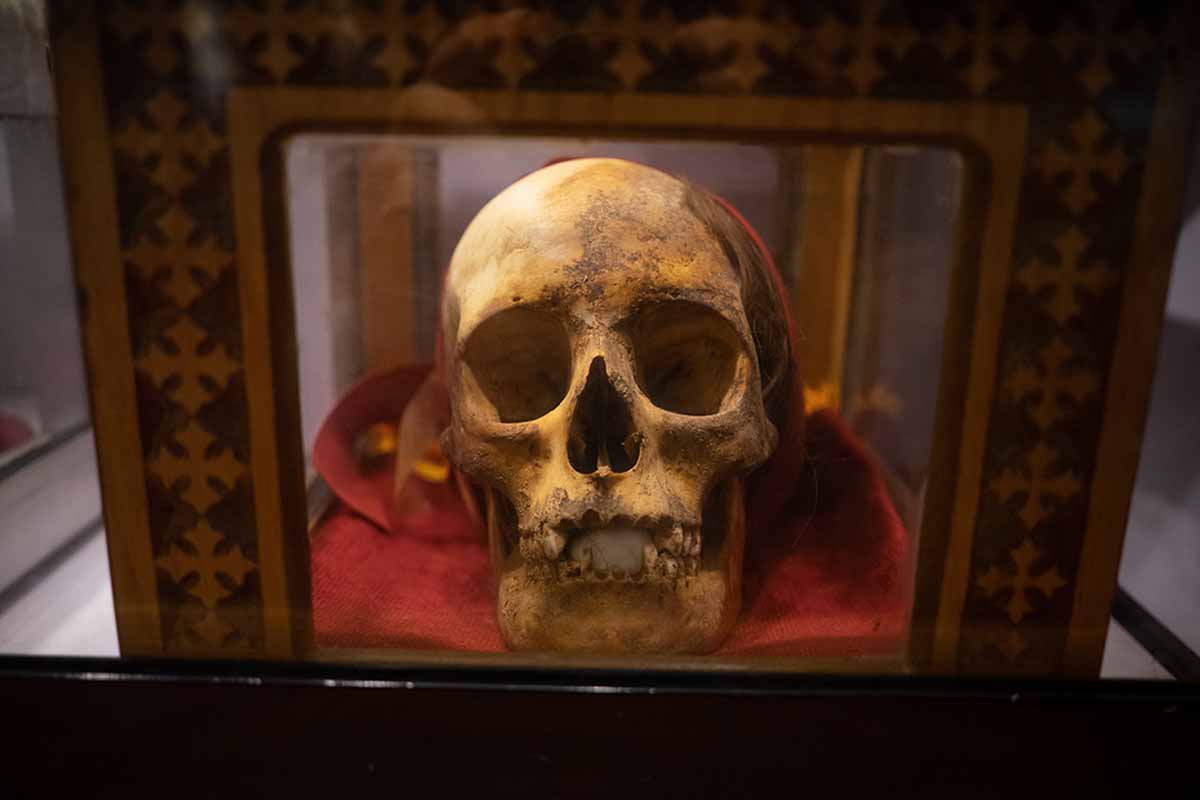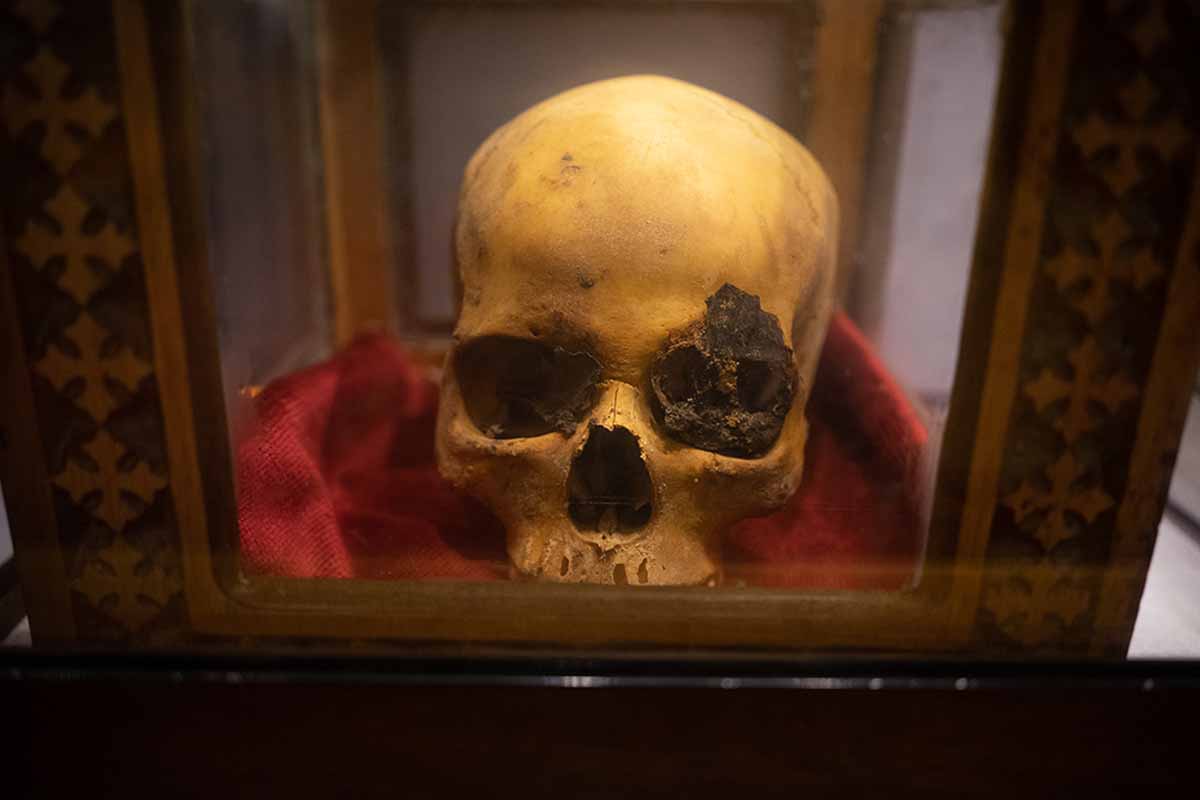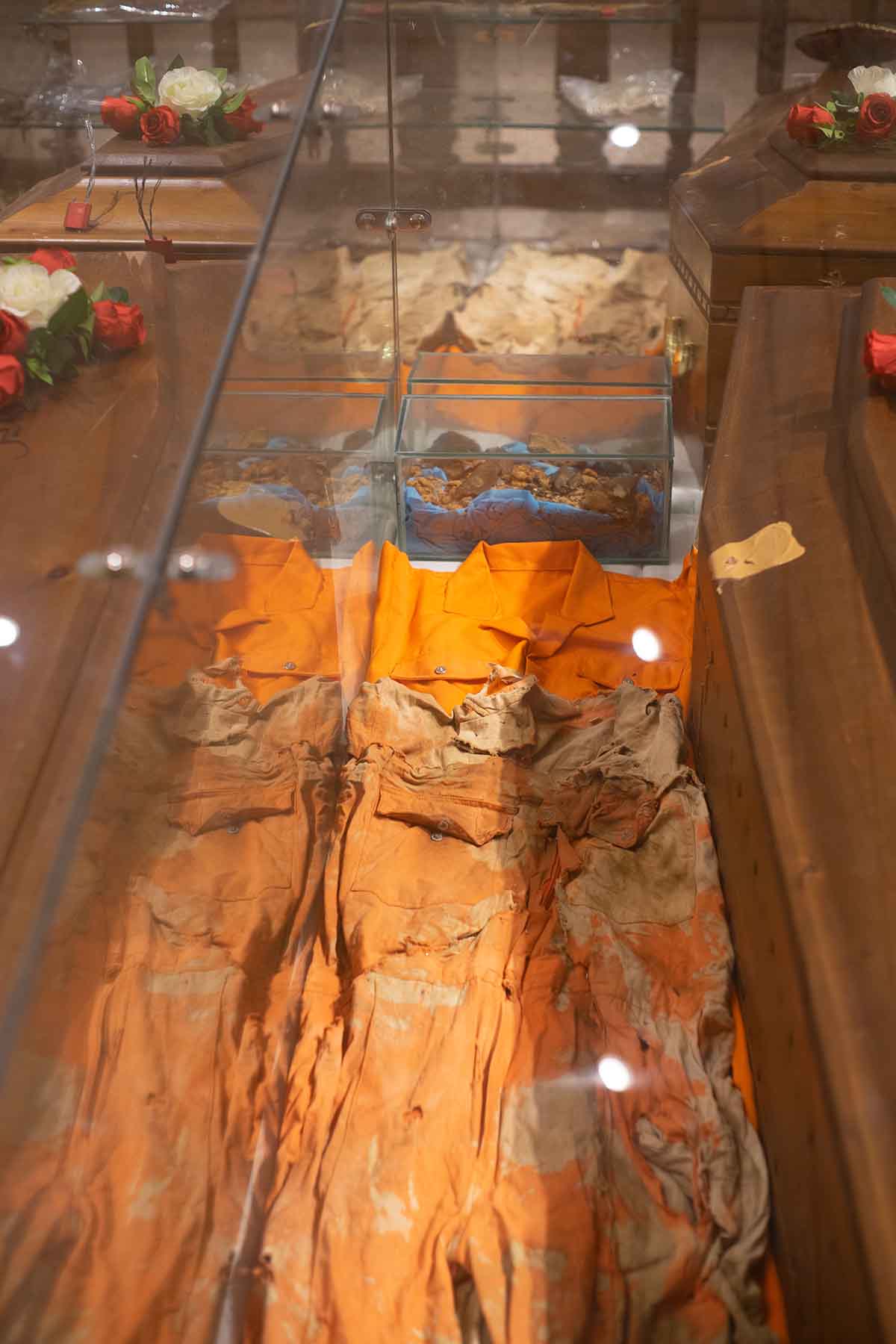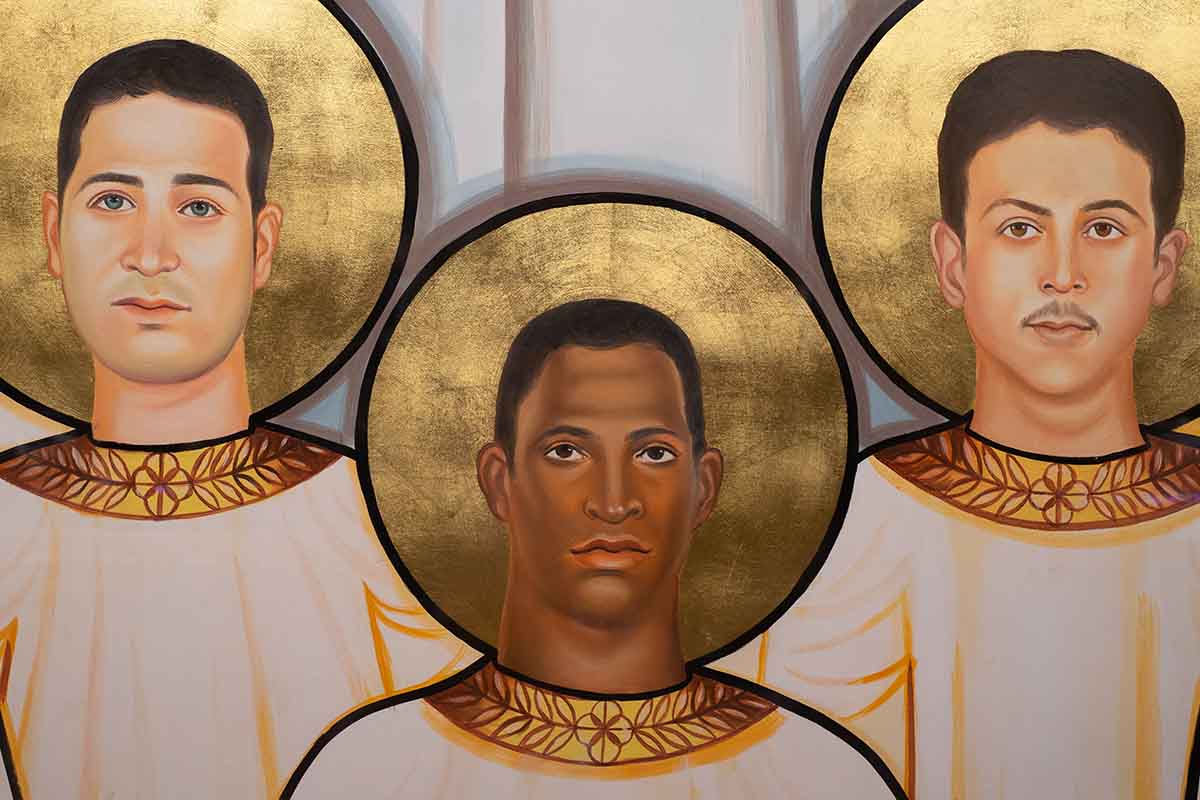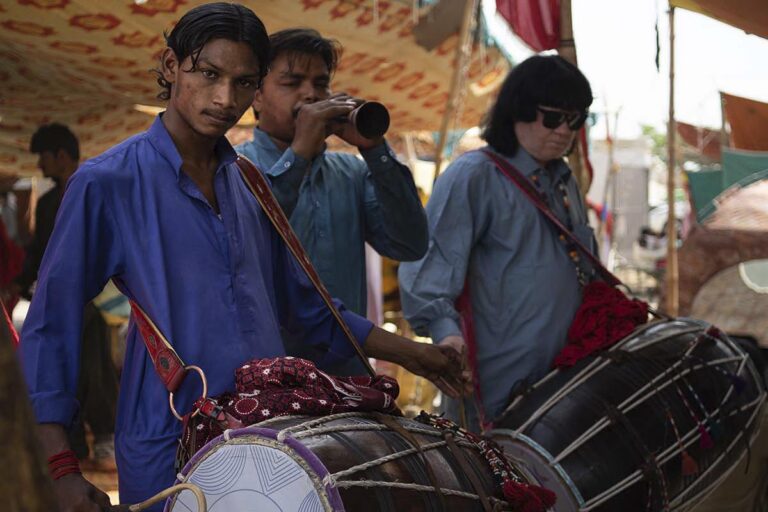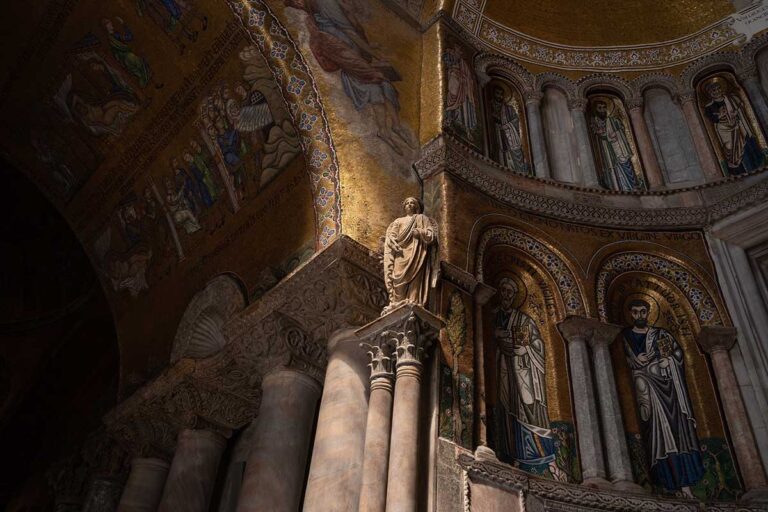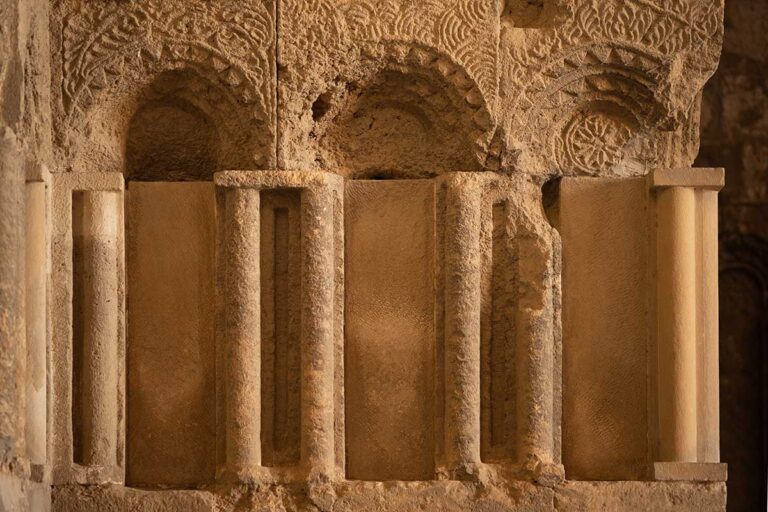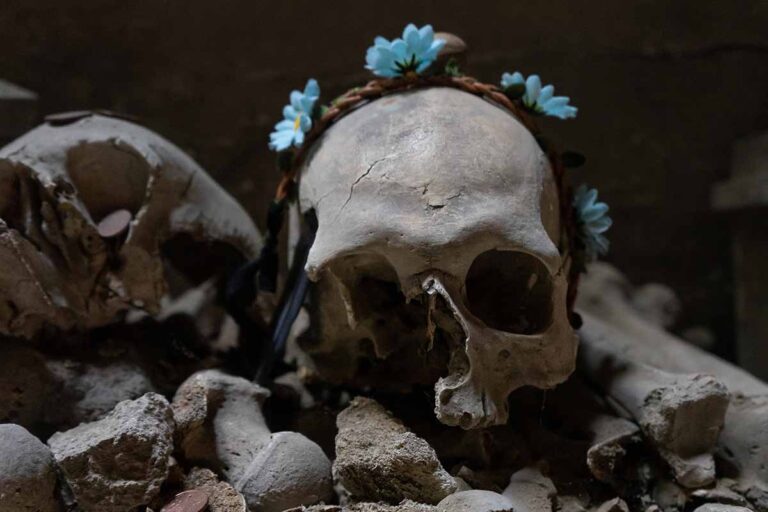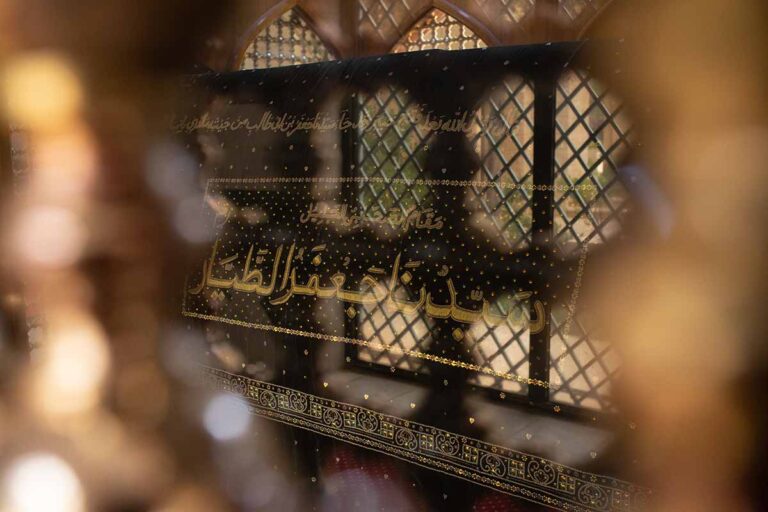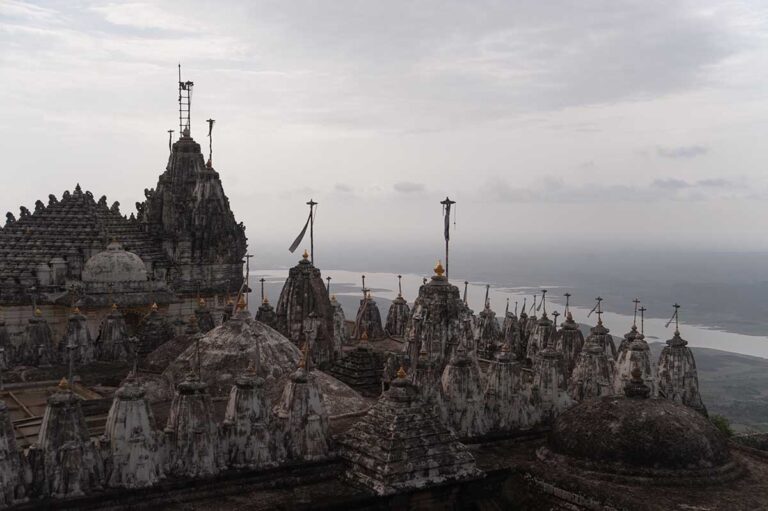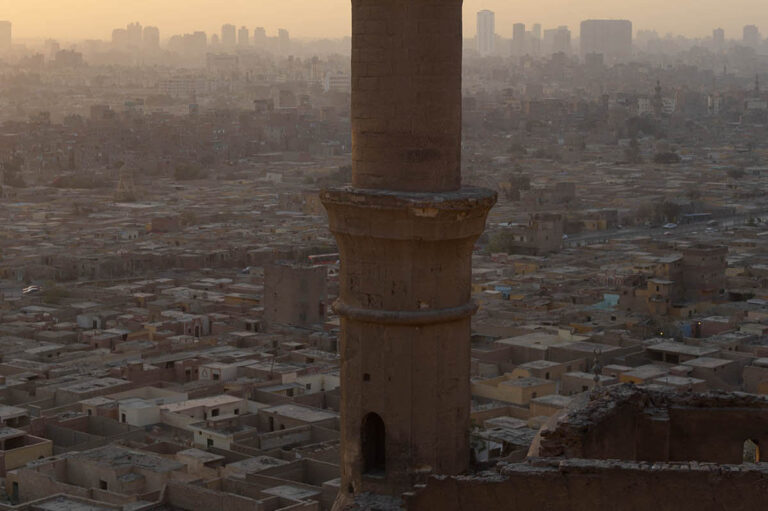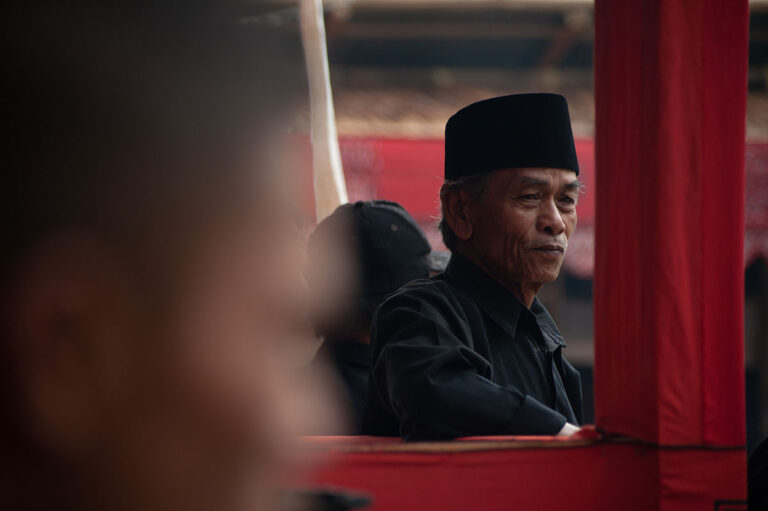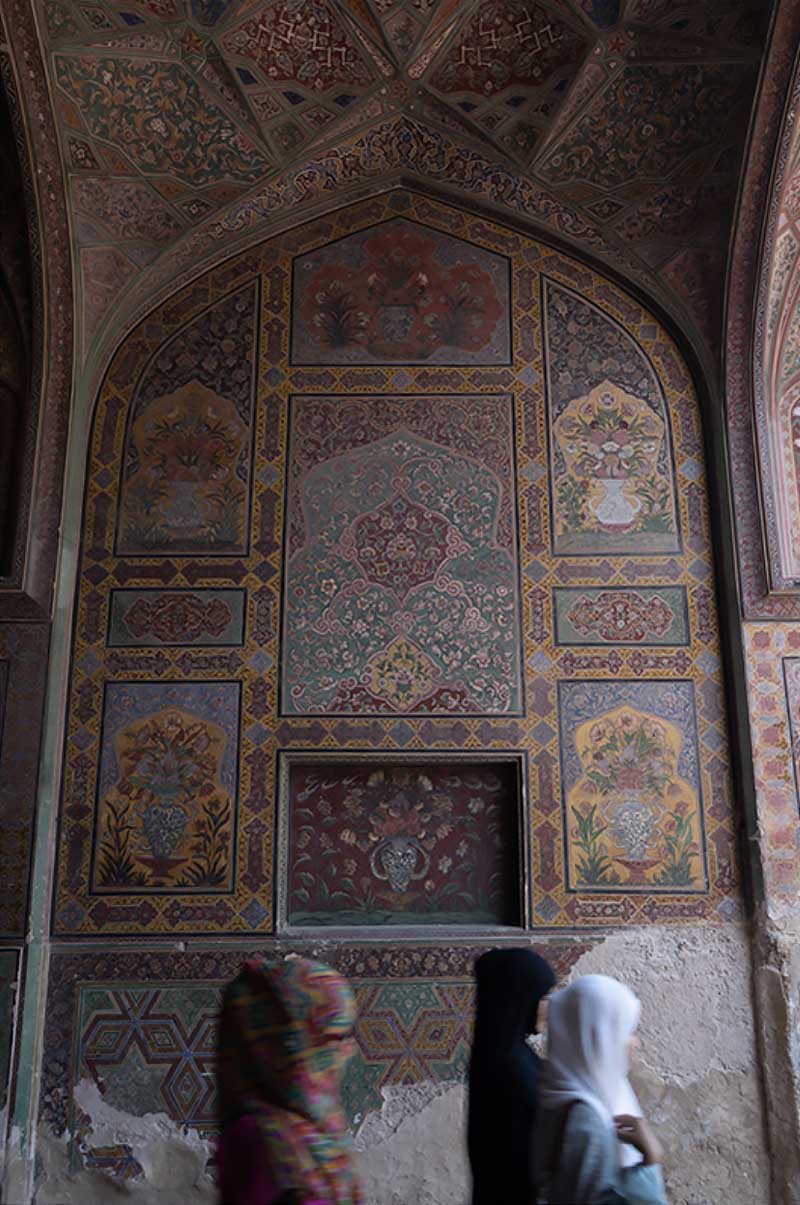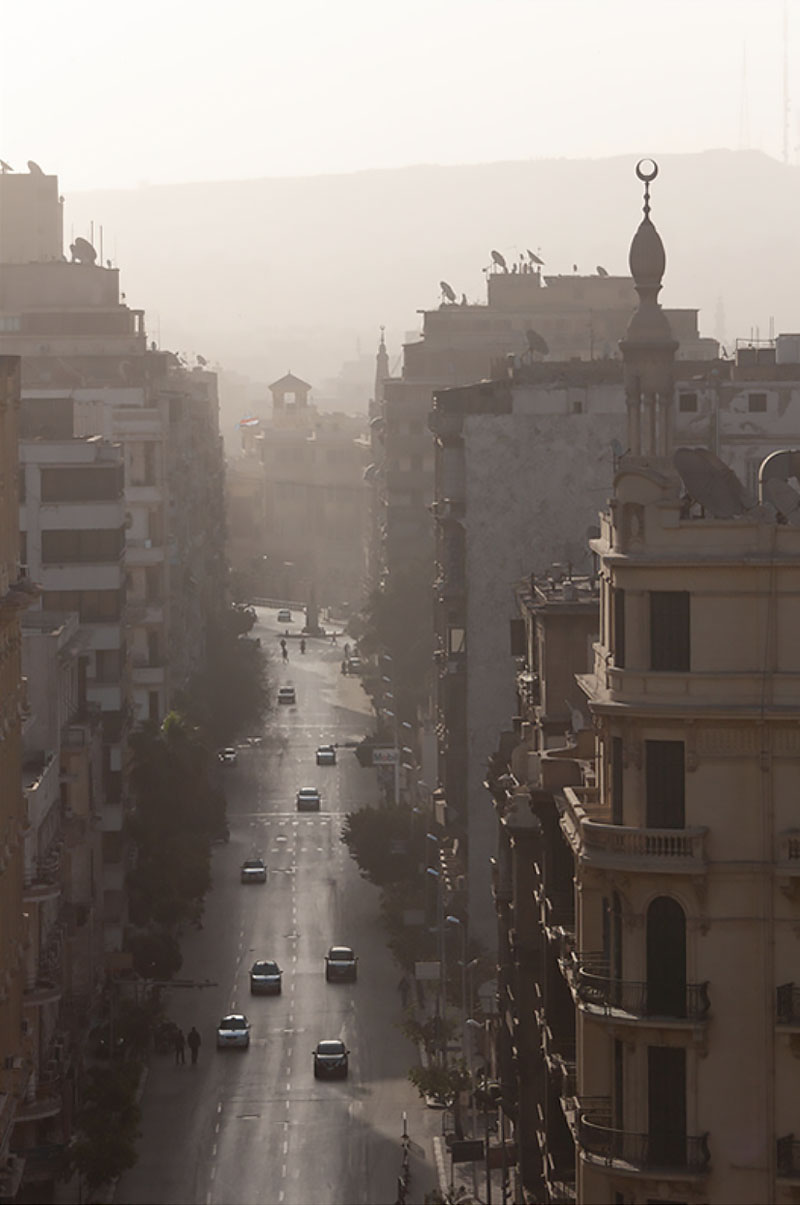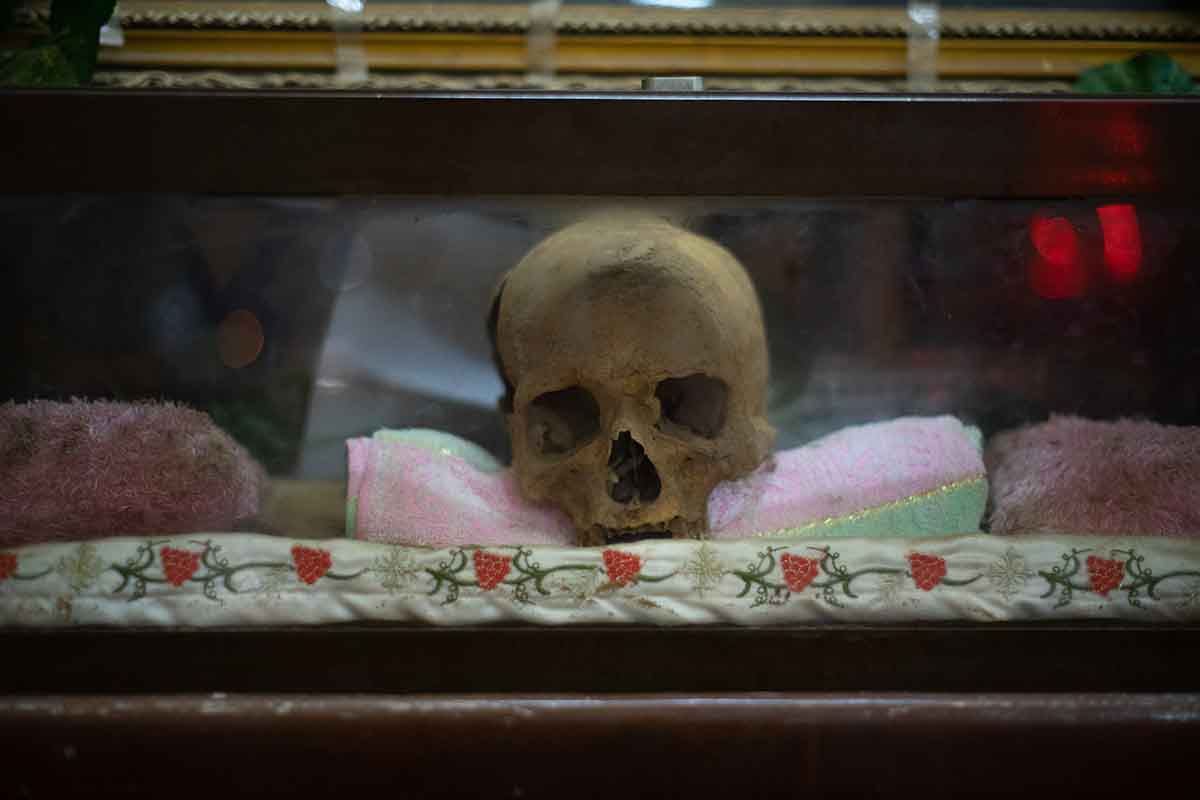
There are countless relics of saints revered in Coptic churches sprinkled all up the Nile Valley. The bones, sometimes picked from old rubble, are often said to belong to saints who died centuries ago, as martyrs—at the hands of Roman Emperors, Fatimid caliphs or Mamluk emirs.
A prime example is the monastic cluster at the desert’s edge just opposite Sohag. Here in ancient Akhmim, the story is told that the Christians foresaw their dark fate through a vision. Knowing what was coming, they welcomed it, perhaps drawing courage from Romans 8:18, which comforts that present sufferings can’t compare to future glories. ‘If God be against us,’ the priest Dioscorus and the deacon Asclepius encouraged their flock in Akhmim as the time drew near, ‘then who can be against us?’
Amassing against them were the forces of Diocletian under the command of Arianus, himself later converted and martyred. The arms of Aranius’ soldiers as said to have tired from three days of slaughter, martyring 8,140 local Christians. Dioscorus and Asclepius were murdered just after, respectively severed at the neck and the waist. It’s believed that their remains are mixed among these and other martyrs’ relics from a long roll of bloodletting here.
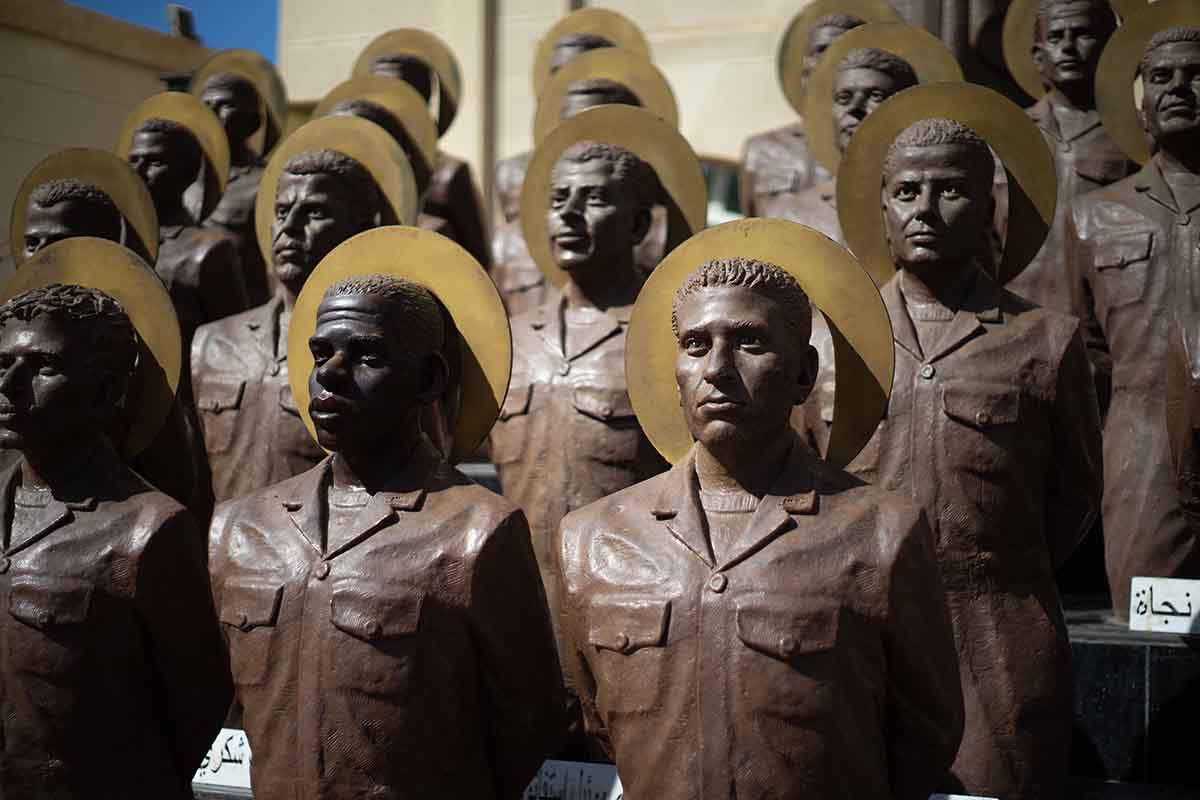
But at the Church of the Martyrs of Faith and Homeland near Middle Egypt’s town of Samalut, a short drive from Minya, the celebrated martyrs were only killed in 2015.
Marched in single file to a Libyan beach and beheaded at the hands of the Islamic State, they were a group of mostly young Egyptian migrant workers from villages around here. Warned to leave Libya multiple times, they were likely aware, as the Christians of Akhmim, what was coming. They chose to remain, singing hymns in the evenings to keep up their courage as ISIS, basing in Sirte, quickly gained control of a large swathe of the war-torn country.
Twenty-one tattered, discolored jumpsuits fill most of the nave at the Church of the Martyrs, along with the zip tie cords their captors used to bind their hands, plus whatever was in their pockets. Their icons adorn the back of the sanctuary with gold-leaf halos beneath an image of Christ.

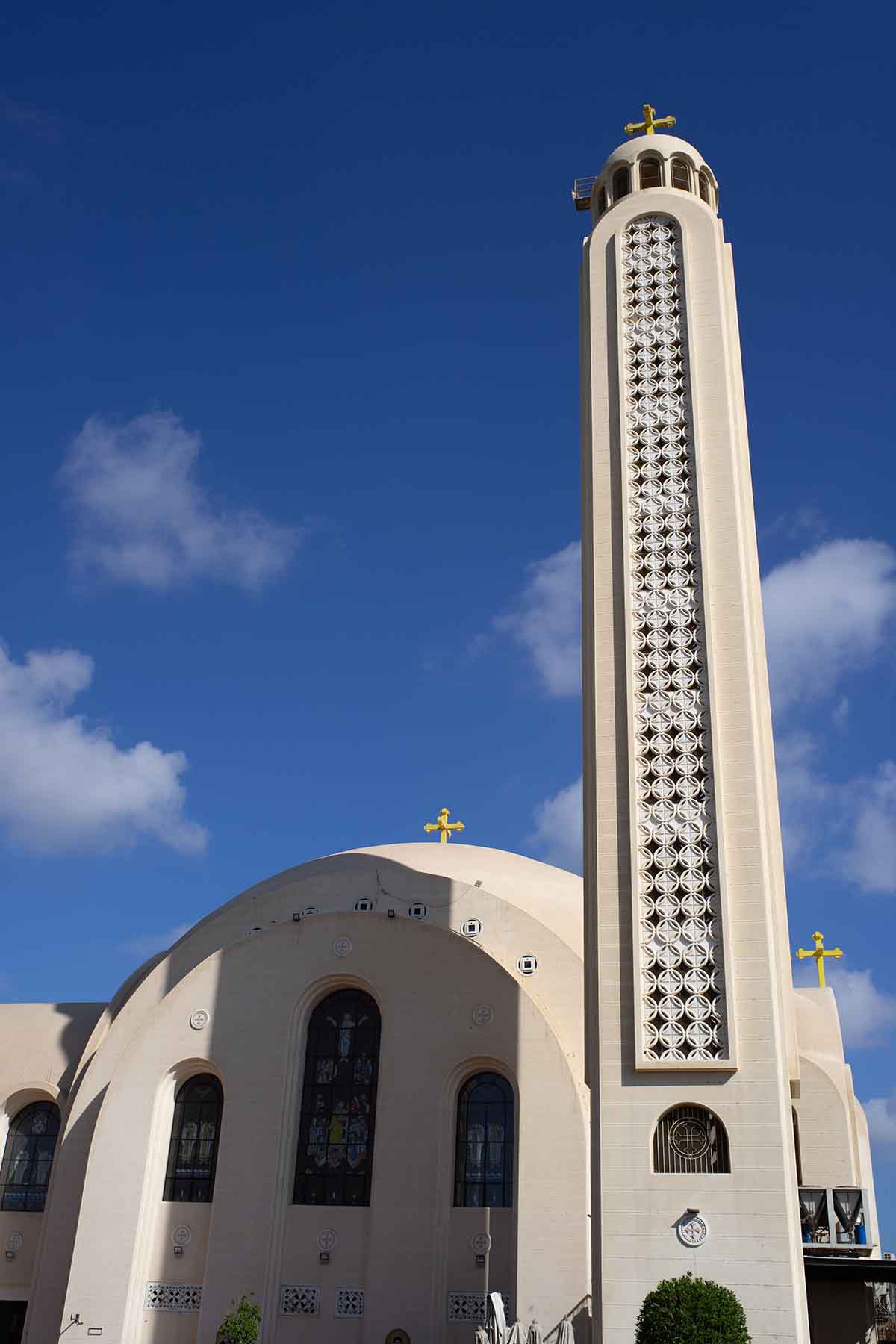
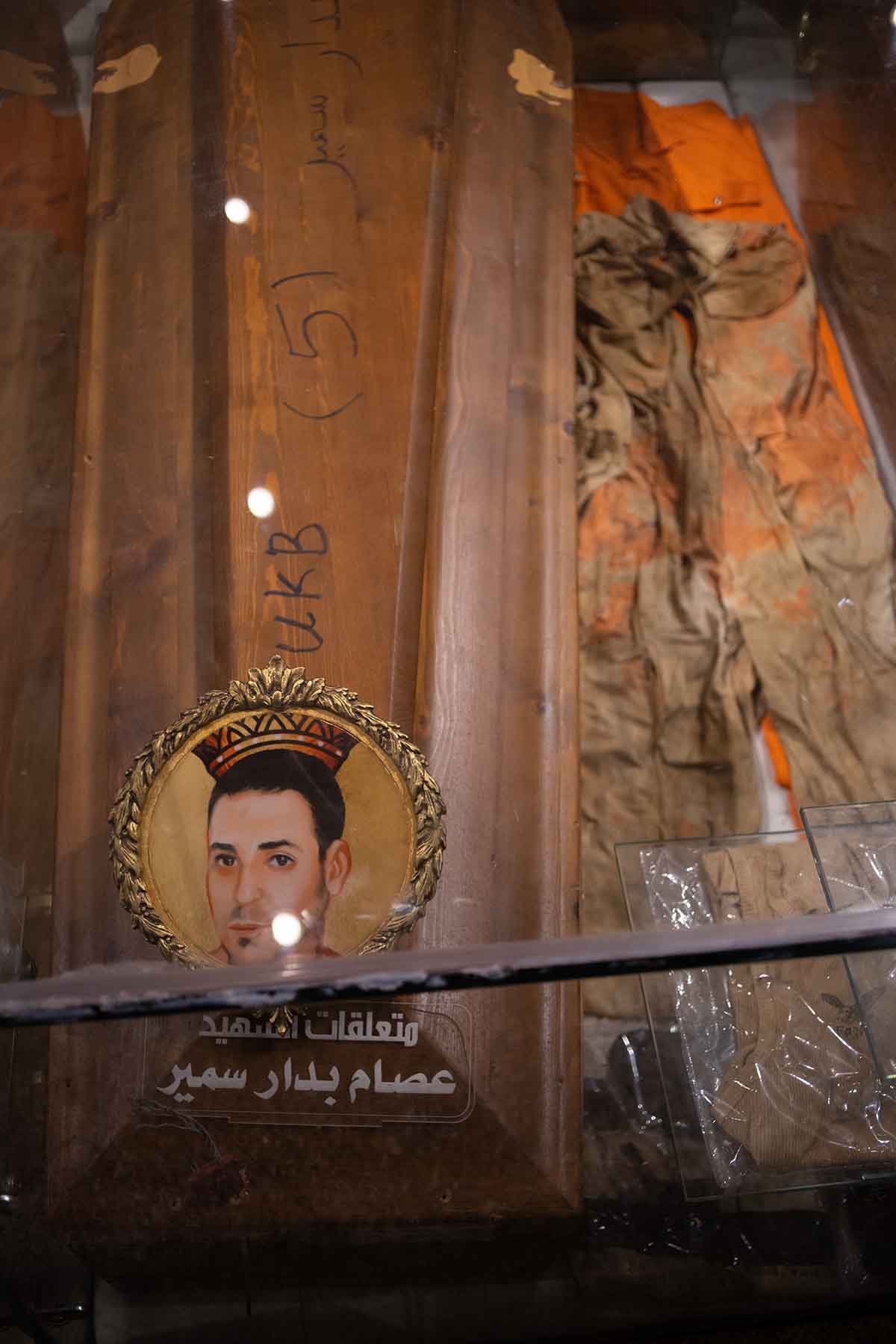
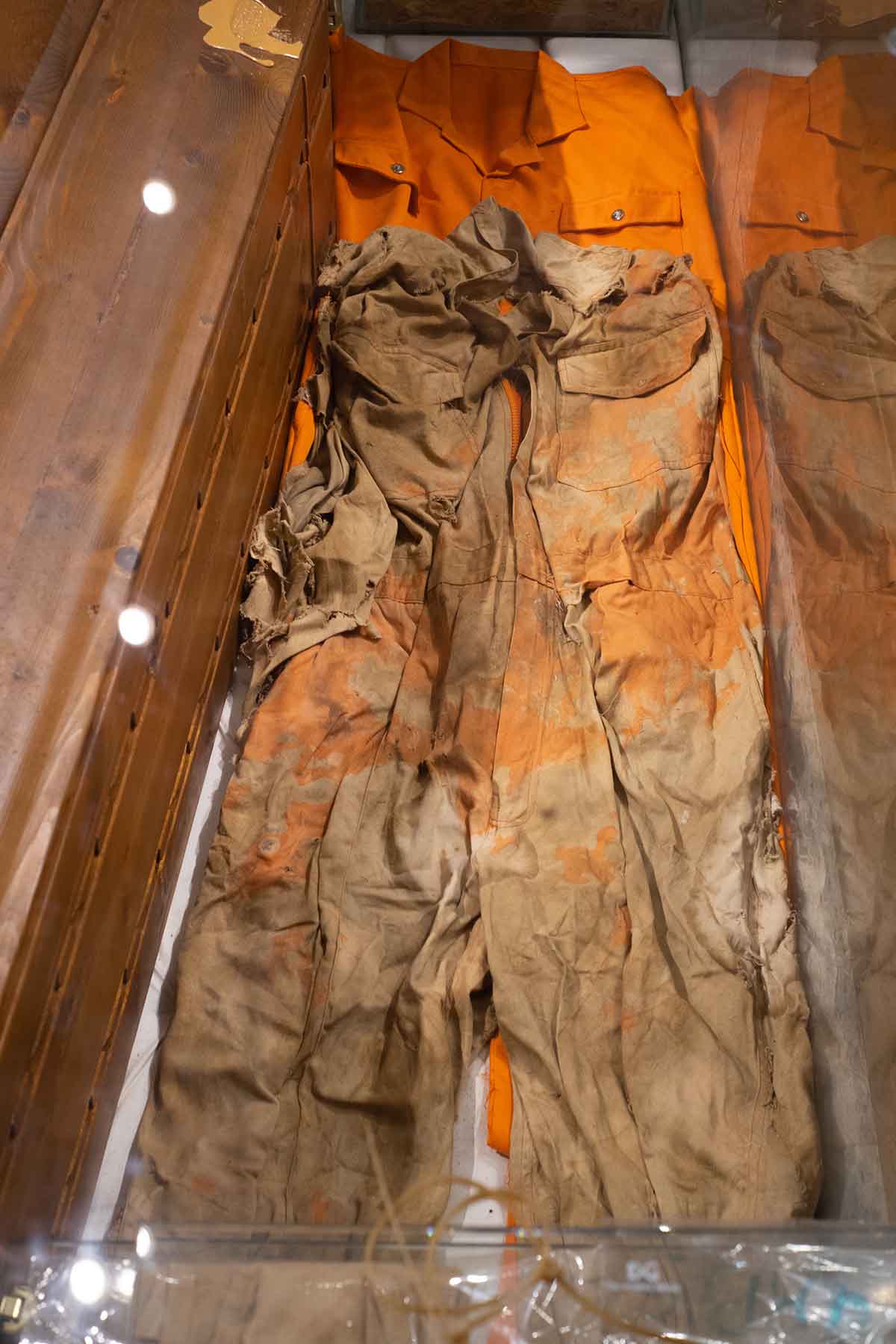
Jarringly, images of Islamic State fighters and screenshots of their terrible footage features on placards all along the church walls. Scenes of torture and brutal execution are of course fixtures in places of Christian worship—particularly in Egypt, where it seems that martyr-mania retains some of the force of its ancient grip. Thus it also should probably not have surprised me that the snippets on the martyrs themselves and their families weren’t soaked in grief. Calling her husband a ‘lion,’ Tawodros’ wife, for instance, swore there was no sadness there to speak of. He’s been crowned, she boasted; they’d all received crowns. There was less celebration of death on display in the martyrs’ own recovered words—but not none. George, moved by the Nag Hammadi massacre of 2010, was remembered to have proclaimed to those around him that to die a martyr was his dream.
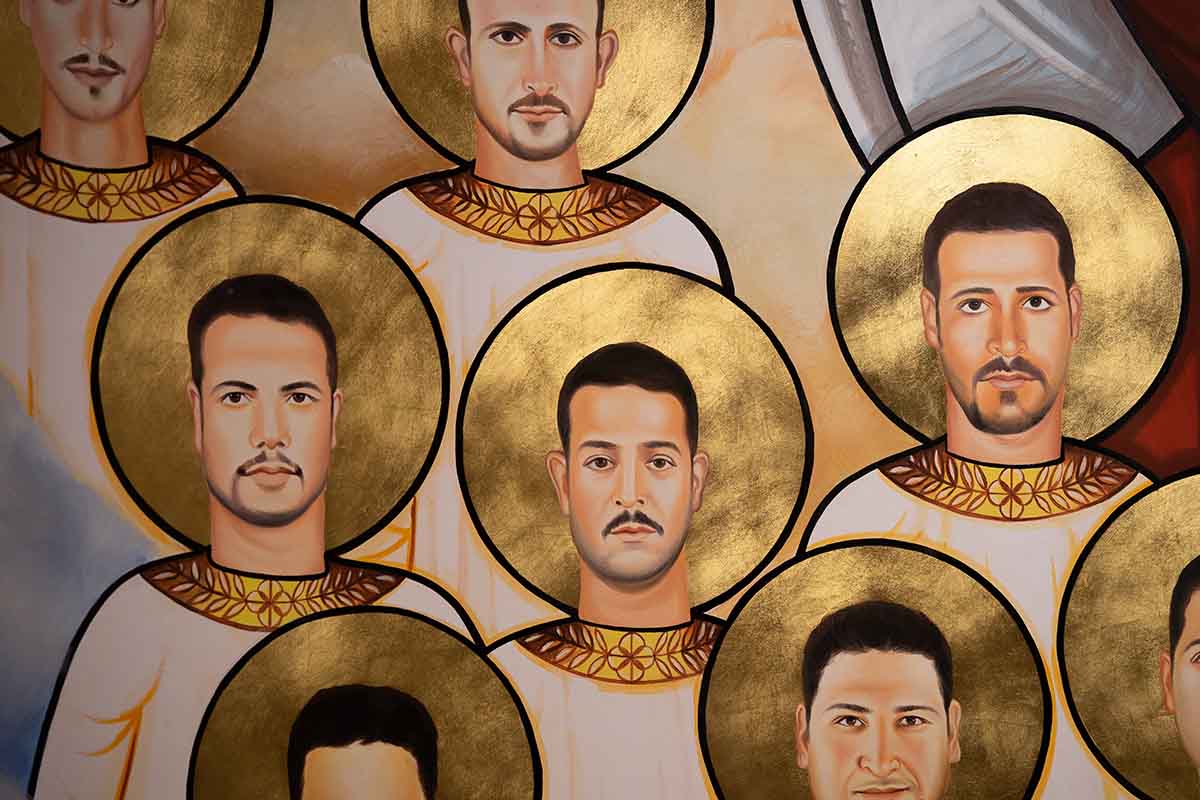
I felt sick to the stomach as we drove from the church and sped over the Nile, my police escort in back. To both him and the driver, both Coptic, I asked: if given a choice, like those in the church were ostensibly given, between life and death—be marched to your own gruesome end on a beach or return to your families at only the cost of a little white lie….
The policeman was quick to reply: ‘God knows what’s in your heart.’ Assuming it was even possible to survive in their shoes (they’d kill you regardless, he said), he’d definitely return to his family. I told him I’d do the same without question, omitting the fact that no lie would be required in my case.
I looked to the driver, still in his 20s, about the age of almost all of the victims—now officially martyrs, canonized as saints. He was quiet, maybe mulling it over, until the policeman stepped out at a checkpoint on the other side of the Nile from Samalut, a short hop from the ancient Church of Jabal al-Tayr.
‘Of course,’ my driver said at last, with an easy shrug like it was hardly a question at all, like there hadn’t been much to mull over. It wasn’t a choice between staying alive or welcoming your own brutal murder. It was one between affirming or denying one’s faith.
‘I’d do what they did.’
